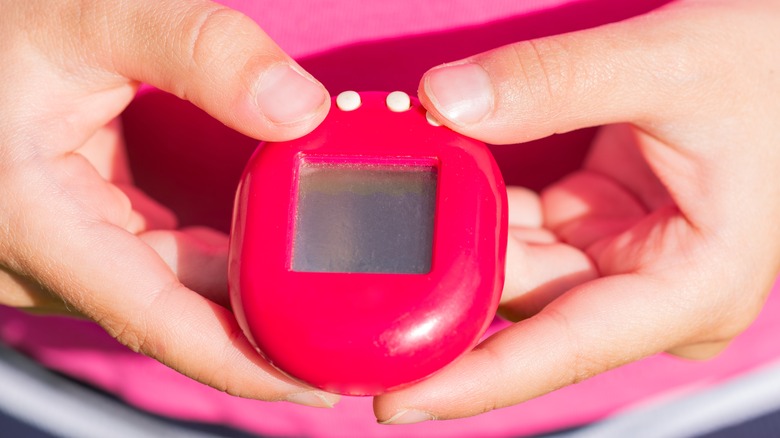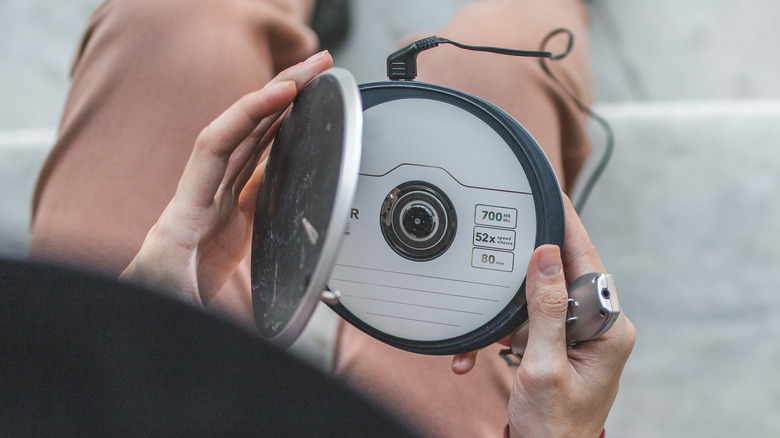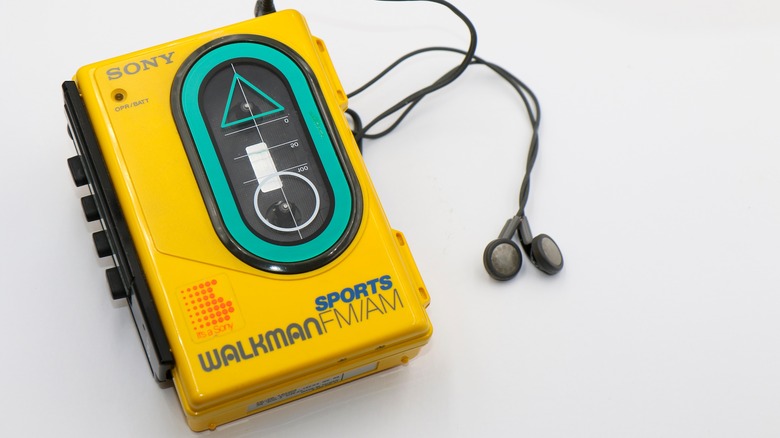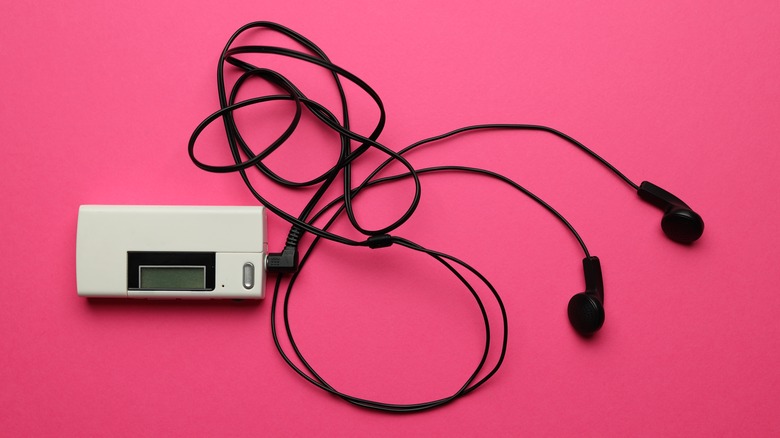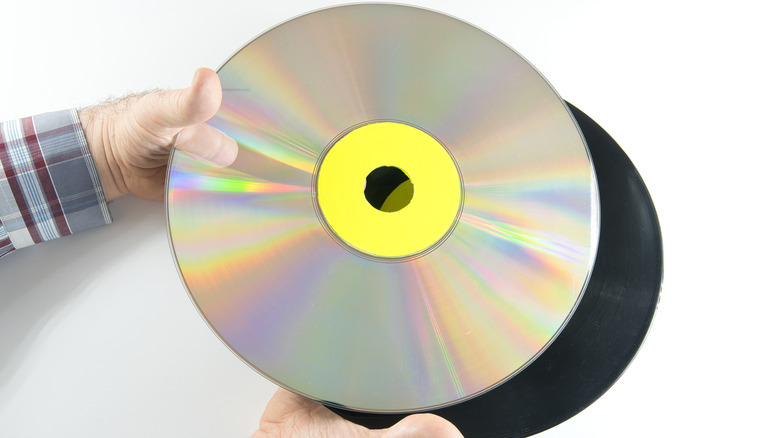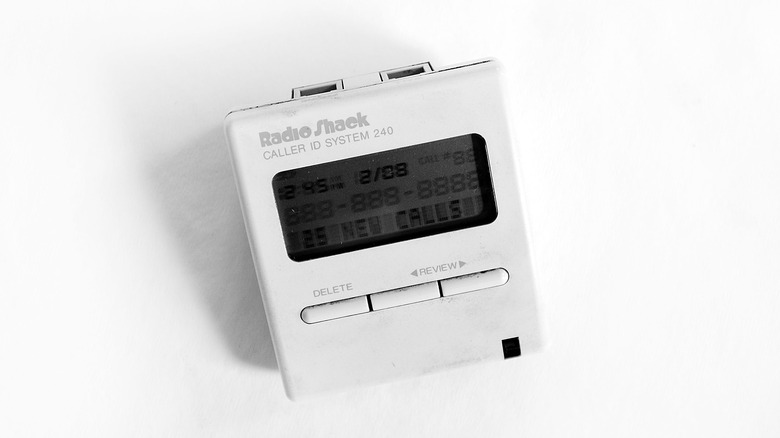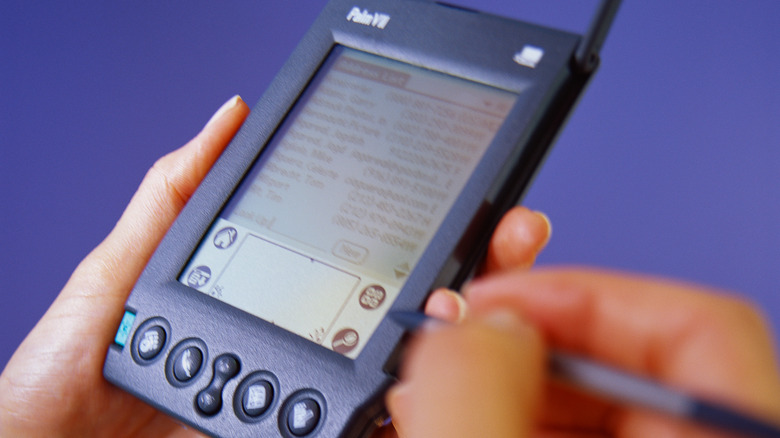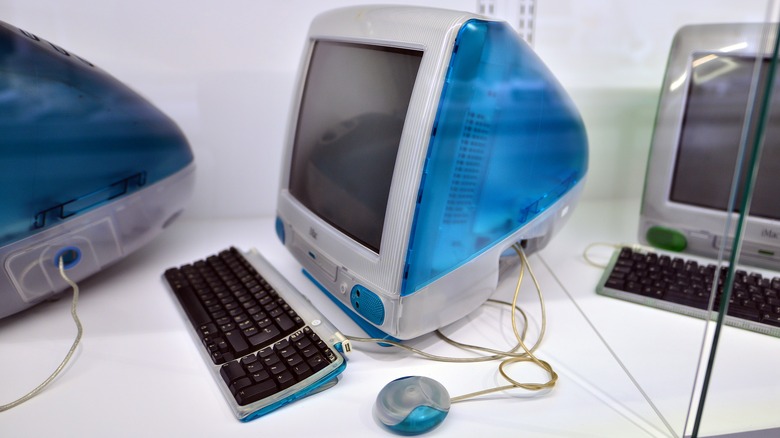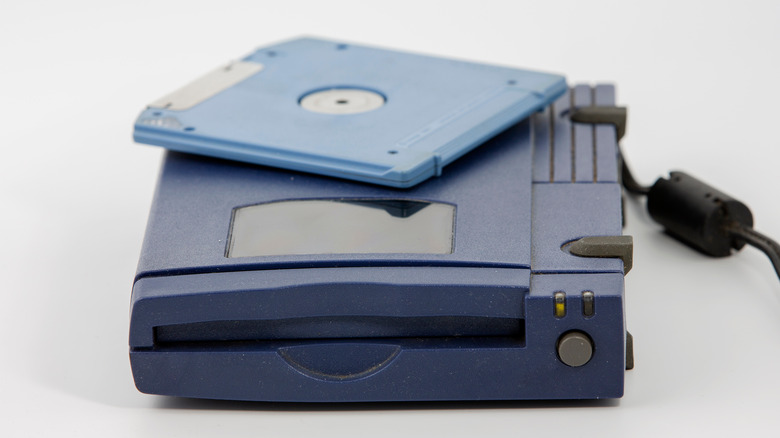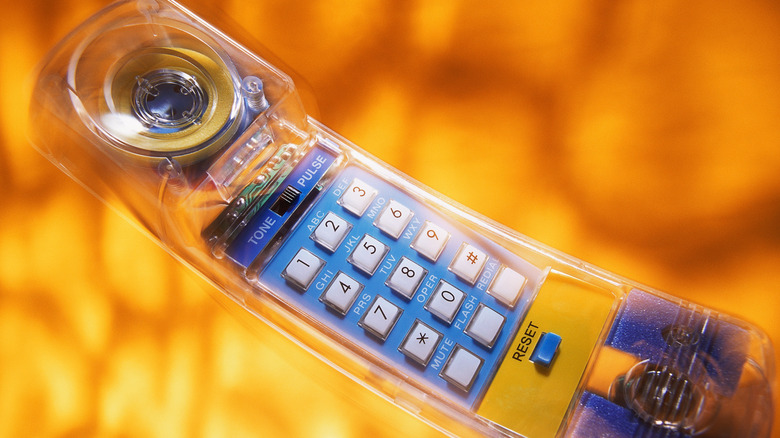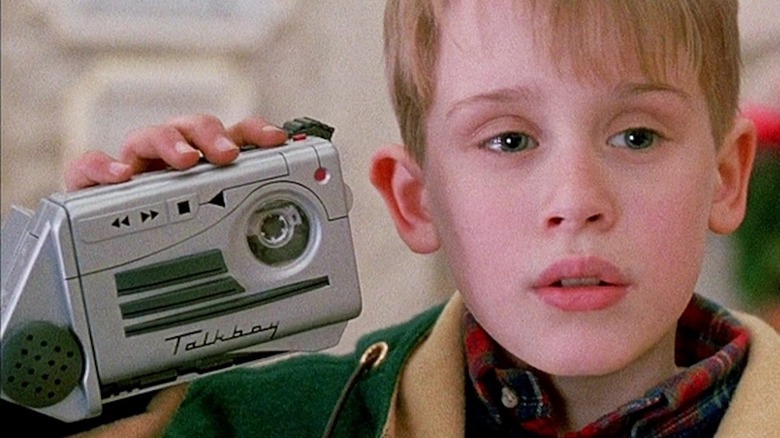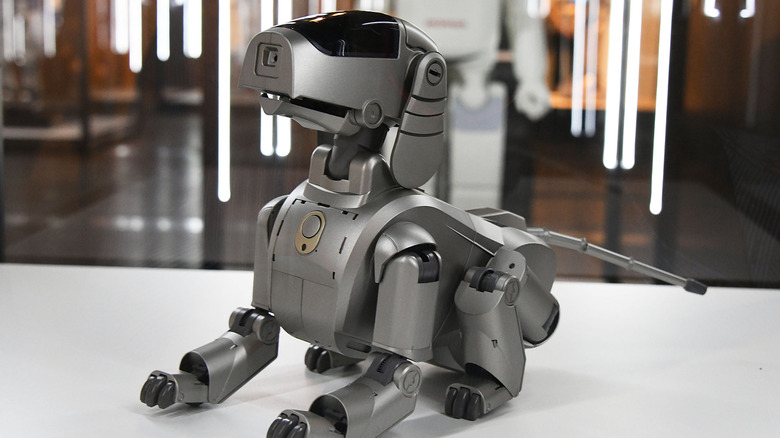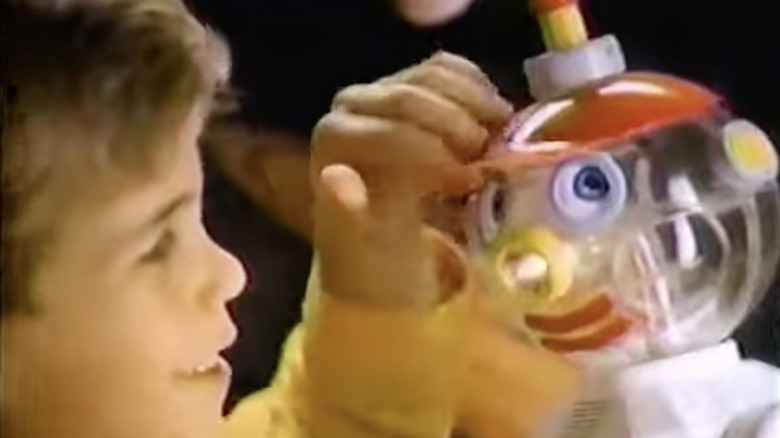12 90s Gadgets Only Millennials Will Remember
We may receive a commission on purchases made from links.
Every generation has its share of products and devices that are eventually replaced, then inevitably forgotten, as the years march ever-onward. But what makes the 90s special in this regard (aside from personal nostalgia bias) is that it was such a wild time from a marketing perspective.
Toys, electronics, and even media formats were in a sort of in-between phase where the technology of the 80s was becoming obsolete faster than companies could come up with reliable alternatives — and this was still well before the kinds of 2000s era gear that would inspire the devices we still use today. Manufacturers were taking a "throw everything at the wall to see what sticks" approach, which resulted in some brilliant gadgets and campaigns for the time, but some were also weird.
To be clear, the gadgets on this list aren't inherently bad or inferior products. It's just that they've been left behind as the world moved on without them. But those of us who grew up in the 80s and 90s will always love them. Why? Well ... why not?
Sony Discman
Back in the 80s, portable music devices were either radios or cassette players. By the time the 90s rolled around, CDs had begun to take over the market, replacing cassettes as most people's media of choice. Being able to skip back and forth between tracks without having to rewind was a pretty big upgrade.
And so portable music devices like the Sony Discman were born — kind of. Sony was actually delving into the idea of personal CD players as far back as 1979, with its very first model (really, the very first model) D-50 launching in 1984. However, despite the superior audio quality compared to cassettes, CDs didn't end up surpassing cassettes until the early 90s thanks in large part to how much they cost in the early days — around $15 in 1982 dollars (almost $50 today) per disc.
Sony's Discman might not be available for retail anymore, but there are still plenty of portable CD players on the market today. From Deluxe Products' $36 CD Player, to MONODEAL's rechargeable model with built-in speakers for $62, and beyond. Some of these players even support MP3 files, so while you may not be able to stream your Spotify playlists, you could still listen to the digital files you own or previously ripped from old CDs.
Sony Walkman Radio
The history of the Walkman is a surprisingly long one, with Sony releasing its TC-50 cassette audio recorder in 1968, finding more commercial success with the TCM-100B (the "Pressman") in 1978, then building off of the Pressman in 1979 to create what eventually became the Walkman.
The Walkman held out until as long as 2010 before Sony finally called it quits. But while the world at-large may have started to shift away from cassettes and into the pancake-like embrace of compact disc players throughout the 90s, Sony's Walkman Radio still held its own.
Among kids and teens, it was the Cadillac of portable music players ... for a limited amount of time at least. For a while even the allure of a CD player you could carry with you wasn't enough to compete with the one-two punch of being able to listen to Paula Abdul's "Forever You Girl" album before seamlessly jumping over to a local FM station to catch the back half of "All I Want" by The Offspring.
Sony would inevitably squish AM/FM radio functionality into the Discman as well, at which point the Walkman Radio didn't stand a chance, but for a brief time, Walkman remained the "it" thing (outside of maybe a Nintendo 64) that made someone a rockstar on the playground.
MP3 Players
Even with the decision to embrace CDs as a means of musical conveyance, technology was unwilling (or unable) to stop progressing. CDs were far more commonplace as the 90s began drawing to a close, but digital MP3 players also started to appear in the late 90s. However, they didn't take the market by storm right away due to some often bulky construction, initially limited (around 32MB at first) storage space, and a typically $200+ price point.
MP3 players did begin to shrink in size and price point while expanding available storage near the tail end of the 90s. Plus the format allowed people to copy tracks from the CDs they already owned to listen to them digitally with zero possibility of skipping. On top of that, services like Napster became a convenient source for individual track downloads or entire albums until the Recording Industry Association of America (RIAA), and Metallica eventually brought the hammer down in 1999.
While that was a death knell for Napster and other at-the-time common free music download sources, the industry did manage to figure out that digital distribution was kind of a big deal. Hence why these days we can buy digital copies of music from official sources across a multitude of platforms, and why MP3 players like the $348 Sony NW-A306 Music Player (one of SlashGear's picks for Best MP3 Players) are still around.
LaserDisc
Something that might not come across these days is just how many devices and formats were readily available but still somewhat out of reach for the average person. Anyone who grew up in the 90s and went shopping in a store that sold movies has likely seen LaserDiscs before, but may not have actually owned any.
If we look at the history of the inevitable VHS vs. LaserDisc battle, the eventual demise of LaserDiscs doesn't make sense. Despite the technology being around since the late 70s, essentially acting as a precursor to DVDs — but roughly the same size as a vinyl record (a 12-inch diameter) — and providing a sharper picture and better audio options, along with easier navigation through media chapters and no need to rewind (though some discs did need to be flipped over), the format never really caught on in the US.
LaserDiscs were cumbersome and much more expensive — with approximate manufacturing costs of $1 per tape, due to demand, versus $5 per disc — than their VHS counterparts. The same goes for the requisite media players, with VCRs being overall cheaper (sometimes as much as $200 less than a LaserDisc player) and thus more accessible.
Of course, once DVDs came around both formats were phased out relatively quickly, but for a time, LaserDiscs were probably the best way to experience movies at home that not a whole lot of people could afford. At least now any leftover LaserDisc collections could be worth some serious cash.
Caller ID
It may come as a surprise to someone that's grown up in the era of smartphones that Caller ID wasn't always a thing. For decades, you had no idea who was calling until you picked up the phone and asked who was on the end of the line. Even if you were expecting to hear from someone, you just couldn't know for sure. And yet, spam calls still weren't as prolific as they are now.
AT&T introduced the technology in the late 70s as "Caller Identification Service" (CIDS), but it wasn't until 1986 that the FCC made Caller ID services a mandatory customer option for all phone providers. After which the feature became far more commonplace by the early 90s. Caller ID wasn't originally baked into the phone, either. It was either an entirely separate device you had to purchase and connect to the phone, or built into other connected devices like answering machines.
Nowadays most phones, even landlines, are likely to have some form of Caller ID functionality in place. And of course smartphones, too. But back in the 90s it was practically a luxury to be able to avoid metaphorical dice rolls every time the phone would ring.
PDAs
No, public displays of affection weren't a "new" concept introduced in the 90s. This acronym actually stood for Personal Digital Assistant (PDA). PDAs were basically a fancier (and usually more portable) mostly all-in-one substitute for a calendar, a schedule, phone number storage, and sticky notes, with wireless communication capabilities (a big deal in the 80s and 90s) to boot.
PDAs as we know them (or knew them) first started to hit the market in the early to mid-90s. Apple's 1993 Newton Message Pad ($699 at the time) arguably led the charge, but it was the first Palm Pilot (released in 1996 for $299) that seemed to really take off by refining the technology.
But it wasn't just fancy devices like the Palm Pilot (or other parts of Palm's legacy.) By the mid to late 90s the concept had been refined and simplified enough that kids could also get in on the wonders of digitized personal organization by way of digital diaries and organizers. It might have taken more time to type out homework assignments on a keypad, but these things usually weighed a bit less than an assignment notepad — and cut down on ink, graphite, and paper use.
You can still readily find PDAs and digital organizers to this day, in fact, like with the $19.99 Jot Pocket Writing Tablet from Boogie Board.
The iMac
Sure, Apple's 24-inch iMac is only a couple of years old, which implies that the iMac isn't a 90s-era gadget. But we're not talking about today's iMac — we're talking about the very 90s iMac. The GameBoy Color of the computer world.
1998 saw the release of the very first iMac G3 with a 4GB hard drive and 32MB of RAM (yes, really) — shaped like a bonbon, housing a 15-inch CRT monitor, and completely encased in a semi-translucent colorful shell — for $1299 (about $2500 in 2024.) The available color assortments that ranged from bright and vibrant to rare and groovy also added to the allure.
These iMacs may not have been as powerful as a custom PC, but they were exceptionally user-friendly. And they were fun ... at least when compared to the dull grays and even duller beiges that were far more common for rigs in the 90s. Also they were a pretty regular go-to for schools when it came to supplying computers for classrooms — which, again, at the time was something of a rarity.
You won't have any luck buying one of these vintage iMacs from most retailers today, though. These models have long since been lost to history. However, they do pop up on the aftermarket from time to time on sites like eBay, usually for around $150 to $300+ depending on the condition.
ZIP Drives
ZIP drives were one of the 90's weirdest gadgets and existed in a time when the tech world was moving away from regular disk drives due to storage limitations and an ever-growing need for more space. But what exactly the next stage in digital storage would be hadn't been figured out yet.
These were basically a beefier version of the floppy disk or diskette, debuting in 1994 to provide 100MB of storage, initially, but going on to offer as much as 750MB of space as the technology improved. It was far more useful for handling the larger amounts of space needed for exponentially improving image, audio, and video qualities compared to diskettes. These weren't cheap at around $200 for the drive and at least $20 for a 100MB disk.
Beyond the expense, some ZIP drives were also prone to a hardware failure that would sometimes make an inserted data disk permanently unreadable. Sometimes the drive itself would also become unusable as a result, so you'd be out both the expensive hardware and all of your stored data.
Of course USB thumb drives skyrocketed in popularity, leaving ZIP drives in the dust with a smaller (and more portable) profile, faster reading and writing speeds, and comparable storage capacity. Then eventually even larger storage space, with ever-shrinking prices. If you really want to check them out, ZIP drives can still be found on Amazon for around $150 to $300, but don't expect to be able to use them in many places.
See-through landline phones
Landline phones were around long before the 90s, and are still around today (though usually of the cordless variety,) but some of what made the era "The 90s" is its aesthetic — the vibes if you will. And aside from Lisa Frank Trapper Keepers, you couldn't get much more 90s than see-through electronics. This included phones too.
The history of these phones is a bit tough to pin down. Several models hit the market in the late 80s and into the 90s, but prices were often prohibitive at around $125. Surprisingly enough, it seems to have been Conair (the hair dryer manufacturer) that got the ball rolling in the consumer market with a sleeker design and a lower price point (somewhere around $15 to $30).
It may seem baffling today, but back then it was the kind of gadget that made kids the envy of their class. Then again, maybe it's not so baffling since now we have things like the Nothing phone (2a) bringing translucency back. If you want to get ahold of your own see-through landline phone now, however, it seems as though aftermarket sales through sites like eBay are your best option since they're not readily available at regular retail anymore. If you're feeling brave you can probably nab an untested one for around $15 to $30, though.
Talkboy
Tiger's Talkboy absolutely gained popularity due to its appearance and use in 1992's "Home Alone 2: Lost in New York." But what's really interesting is that the movie prop seems to have come first, with director John Hughes asking Tiger to build the device for the film that the company could then commercialize and sell.
A preliminary model was released in 1992 without the "voice changing" ability to slow audio playback, but a more full-featured version would later come out the next year. The Deluxe Talkboy was much closer to what fans of the film would've been hoping for, releasing in 1993 with an MSRP of $29.99. Problem is, Tiger didn't anticipate a surge in demand once the home video was made available later that year — to the point that the company had to pull upcoming holiday ads due to not having enough stock.
This bizarre little gadget was basically just a cassette tape recorder and player designed to be strapped to your hand with easily-accessible buttons and an extending microphone. This let you record sounds or voice clips fairly easily (for the time), then rewind and play them back at regular or slow speeds.
You're not going to have any luck walking into a retail store and finding a Talkboy on the shelves today, though. Your best bet is to check for second-hand listings on sites like eBay, where you may find one for anywhere from $80 to $500+ depending on the condition and whether or not everything still works after several decades.
AIBO
Before Roboen's auto-transforming Optimus Prime robot there was AIBO: Sony's dog robot that was introduced all the way back in 1999.
It all began with the ERS-110, which was unveiled in the summer of 1999 with a price of $2500 (just over $4700 in 2024.) Sony claimed the four-legged machine would provide a dog-like experience thanks to a variety of motors, joint movement ranges, sensors, and programming. ."
Aside from the novelty of having a robot dog for a pet — one that allegedly would actually act like a real pet in a number of ways, too — there were other reasons someone might have wanted to get an AIBO. For one thing, it completely eliminates the worry of pet dander for anyone that might be allergic. It's also arguably cheaper in the long run compared to a real dog, since there aren't any vet bills or regular checkups to worry about.
The ERS-1000 AIBO model is still available directly from Sony today, carrying an eye-watering $2899.99. Vintage models like the ERS-210 and ERS-7 can be found on the aftermarket through sites like eBay from anywhere between $400+ to $1600+ depending on the condition.
My Pal 2
Why try to convince your parents to spend $1000 on a fancy robot dog when you could ask for a roughly $50 robotic buddy instead, though? Toy Biz's My Pal 2 hit store shelves in 1991 and could do it all — so long as you only expected a few very specific things.
It could play a simple game of ring toss with some electronic cheers, fold out a small door on the stomach, plug in the ring toss ring, and be a bedroom-sized basketball hoop, also complete with electronic cheers.
The included ball could be loaded into one hand and tossed via a spring-loaded arm. A "guard dog" mode would cause My Pal 2 to bark if you placed it in front of a door and it was moved. You could play simple games like color-coded Simon using the chest buttons. And, just because, there was a dedicated (and literal) tickle button under one of the armpits you could press to make the little robot start giggling.
Of course these days you're never going to find My Pal 2 on a regular store shelf, but you can still find them on the aftermarket for as little as $15 if you don't mind a bunch of missing accessories.
